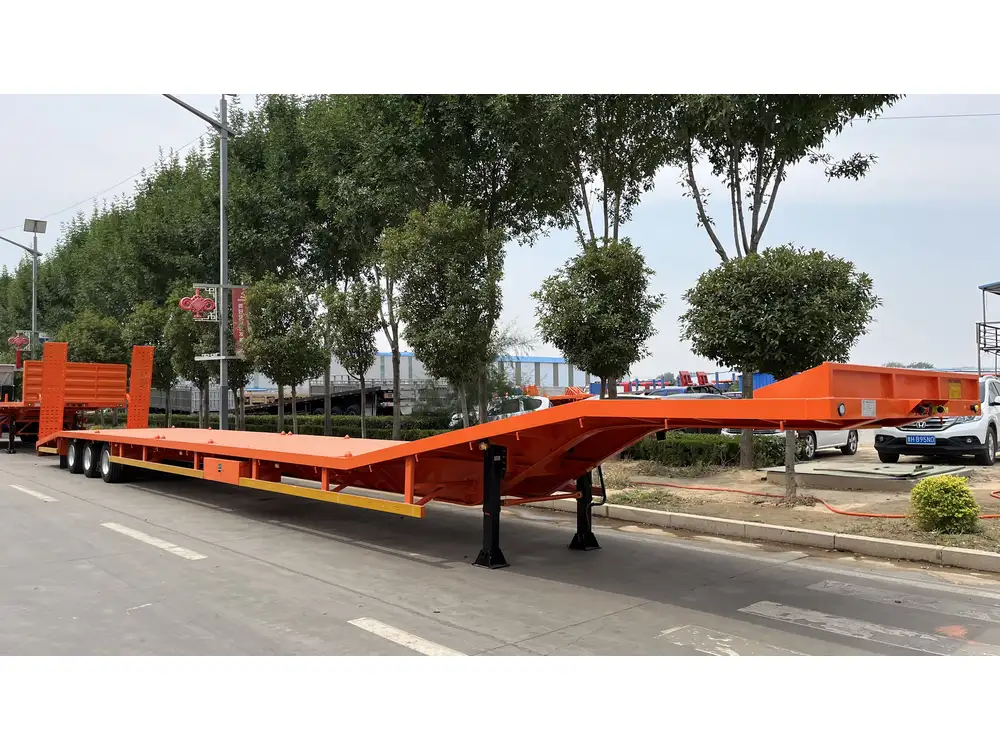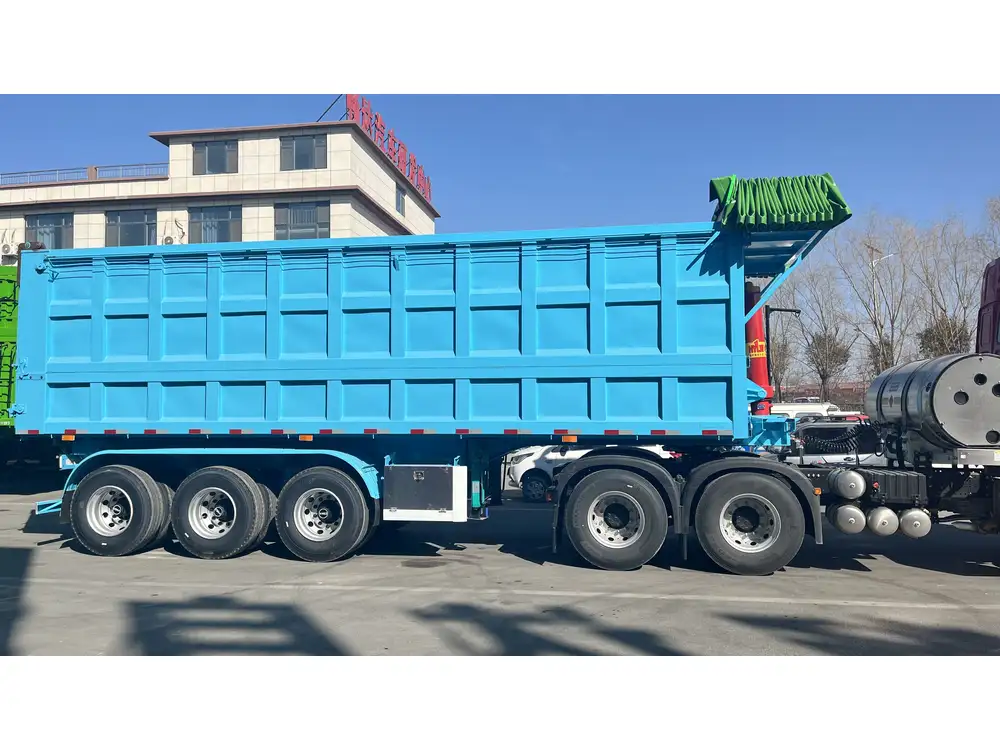When it comes to the intricacies of semi-trailer maintenance, the positioning of the leveling valve stands as a crucial yet often overlooked aspect. Proper placement significantly fosters efficient suspension function, aiding in improved ride quality, cargo stability, and tire longevity. Throughout this comprehensive guide, we will delve into where the leveling valve should be placed in a semi-trailer and explore the factors impacting its performance.
Understanding the Role of the Leveling Valve
Before we dive into the specifics of positioning, it is essential to grasp what a leveling valve does. This crucial component regulates the air suspension system, adjusting the ride height of the trailer based on the load. A well-functioning leveling valve maintains an equitable distribution of weight across the axles, ensuring that the trailer remains level even with variable loads.
Key Functions of the Leveling Valve
- Maintains Ride Height: Automatically adjusts height to ensure the trailer remains level.
- Enhances Stability: Optimal weight distribution across axles improves handling and stability.
- Increases Tire Life: Proper alignment minimizes uneven tire wear caused by incorrect ride heights.

Determining the Ideal Position for the Leveling Valve
Factory Placement Standards
Manufacturers typically position leveling valves on either side of the trailer, near the center of the axle assembly. This conventional positioning is derived from extensive testing and performance analyses. However, there are nuanced factors that could dictate a need for adjustments or refinements.
| Position Setting | Advantages | Disadvantages |
|---|---|---|
| Standard Location | Simplicity of installation, proven reliability | May not be ideal for all load distributions |
| Custom Location | Tailored to unique load requirements | Requires expert installation and calibration |
Factors to Consider for Optimal Placement
Trailer Configuration
- Different trailer designs necessitate unique considerations for leveling valve placement. For example, flatbeds may allow varied load distribution compared to enclosed trailers. Thus, the positioning should cater to the particular type of trailer.
Suspension System Type
- Various suspension systems (such as air or spring suspension) may have different leveling valve requirements. For air suspension systems, the valve should be situated to effectively respond to air pressure changes based on the load.
Load Characteristics
- Analyzing the typical loads carried by the trailer can reveal specific positioning benefits. If a semi-trailer frequently carries unbalanced loads, adjusting the valve placement might help remedy related issues.
Height and Clearance Concerns
- Clearance is another vital consideration. The leveling valve should be placed in a position that avoids obstruction from other components. This prevents potential damage during operation and ensures efficient functioning.

The Effects of Misplaced Leveling Valves
Common Issues Encountered
Improper leveling valve placement can result in a myriad of problems affecting both performance and safety. The following issues often arise:
Uneven Ride Height: Misalignment can cause one side of the trailer to sit higher than the other, leading to potential instability and increased wear on suspension components.
Poor Load Distribution: An unbalanced load can compromise braking effectiveness and lead to hazardous driving conditions.
Increased Tire Wear: Tires can wear unevenly if the trailer does not maintain a proper level, necessitating more frequent replacements and resulting in higher operational costs.
Identifying Symptoms of Misplacement
Recognizing symptoms is vital for timely intervention. Look for these indicators:
- Visible tilt of the trailer while stationary or in motion.
- Frequent adjustments needed to the ride height.
- Excessive tire wear patterns.

Best Practices for Leveling Valve Installation
Installation Steps and Considerations
Installing a leveling valve is both an art and a science. Here are steps to achieve optimal results:
Choose the Right Valve: Ensure the leveling valve is compatible with your suspension type and trailer specifications.
Determine Ideal Placement: Based on previous discussions, conduct a thorough analysis of your trailer’s design and load characteristics.
Mounting Procedures: Securely fasten the leveling valve to the frame of the trailer, maintaining a proper height from the ground to minimize potential damage. Use shims if necessary for adjustments.
Air Line Connections: Connect air lines, making certain they are free from kinks and obstructions. Their routing should favor ease of movement to prevent wear.
Test and Adjust: Upon installation, test the leveling valve under various loads to ensure the trailer maintains a consistent ride height. Fine-tuning may be necessary to achieve the desired performance.
Maintenance of the Leveling Valve

Routine Inspections
Just as the placement is pivotal, regular maintenance ensures the leveling valve operates at peak efficiency. Implement a routine inspection schedule which includes:
- Checking for air leaks in lines or the valve itself.
- Examining the valve for physical damage or corrosion.
- Verifying the alignment and mounting integrity of the valve.
Troubleshooting Common Issues
If issues arise, leverage these strategies for troubleshooting:
- Leaking Air Lines: Repair or replace damaged air lines immediately.
- Faulty Valve Operation: If the valve does not respond correctly to adjustments, calibration or replacement may be necessary.
Tuning the System for Optimal Performance
After ensuring the leveling valve is correctly positioned and maintained, it is essential to fine-tune the overall suspension system.
Adjust Air Pressure: Maintain optimal air pressure within the suspension system as specified by the manufacturer. This enhances the valve’s response to load changes.
Weight Distribution Analysis: Conduct routine checks on weight distribution across the trailer. Use load gauges or scales to confirm that the trailer is properly balanced during transport.
Regular Professional Inspections: Schedule regular inspections with a qualified technician who understands the nuances of leveling valve systems in semi-trailers.

Conclusion
Understanding the optimal positioning of the leveling valve in semi-trailers is indispensable for maximizing efficiency, safety, and longevity. By placing the valve appropriately, considering critical factors, and maintaining the system diligently, operators can significantly enhance performance and mitigate problems. Implementing best practices not only ensures a smooth, stable ride but also fosters trust in your semi-trailer operations.
Call to Action
Are you ready to enhance the functionality and safety of your semi-trailer? Explore our extensive range of leveling valves and our bespoke installation services to ensure you make the best choices for your transport needs. Let’s optimize your semi-trailer experience together!



